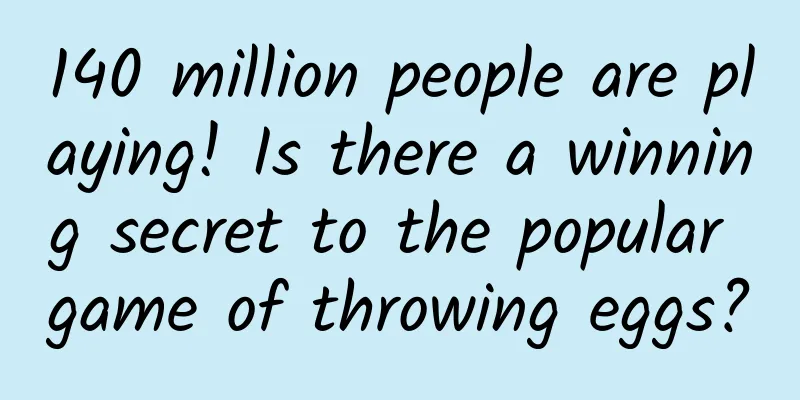The Bronze, Silver and Golden Ages of Chinese Makers

|
The word "maker" comes from the translation of the English word "MAKER". Simply put, they are a group of people who believe in innovation, use technology as tools, and take practice as a criterion, and strive to turn various creative ideas into reality. In March this year, after Premier Li Keqiang, Vice Chairman of the National Committee of the Chinese People's Political Consultative Conference and leaders of various ministries and commissions conducted research and visits to maker ecosystems in various places, the word "maker" was included in the State Council's work report. "Maker" also entered the public eye from a niche group, and from being "makers" of makers to being "makers" for all of China. Below, we sort out the three stages of the development of "makers" in China for readers. The Bronze Age: Enlightenment and Open Source Hardware During the Enlightenment period, “makers” mostly started from their interests and gathered together to form their own “maker” groups. In 2006, the first version of the open source hardware Arduino was branded as FlamingoEDA in Beijing, marking the beginning of the open source hardware movement in China; in 2008, Seeedstudio and DFRobot, two of the world's top five open source hardware suppliers, were founded in Shenzhen and Shanghai respectively, but almost 100% of their business is concentrated overseas; at the end of 2010, the open source hardware communities in Shanghai, Beijing and Shenzhen successively established maker spaces, among which the earliest open source hardware suppliers also participated as core initiators of the maker spaces; in 2011, Zhang Hao, one of the initiators of the Beijing Maker Space, translated "Maker" into "Chuangke" in an email, and the term maker was first proposed. In October 2011, at the first China Open Source Hardware Conference, makers from all over the country proposed to hold a special gathering for Chinese makers - the Maker Carnival, and the first Maker Carnival was successfully held in April 2012. With the establishment of the maker ecosystem in the three major cities and the holding of large-scale events for Chinese makers, the Chinese maker enlightenment movement has also begun, and makers have become a new niche group with hobbies as the core, willing to share, and innovative spirit. The Silver Age: From Community to Hardware Entrepreneurship After the early stages of development, “makers” began to mature, gradually transitioning from small groups to startups and making their mark in the Internet industry. In October 2012, the book "Makers, the New Industrial Revolution" was published in China; at the same time, the hardware entrepreneurship trend that emerged from Silicon Valley, especially the smart hardware entrepreneurship trend, swept the world, and innovative applications based on hardware equipment + Internet + big data also emerged one after another. The global maker space is full of the first players and creators of quantified self, smart hardware and various new hardware based on open source hardware. According to incomplete statistics, from the end of 2012 to the end of 2014, more than 1,000 smart hardware startups were born in China, of which more than 200 received financing. In Beijing Maker Space alone, the first hardware startup project in China's Maker community with a valuation of over 10 million, 100 million, and 1 billion was born. This also attracted leading companies in the chip and distribution fields around the world, including Intel, Foxconn, Taobao, and JD.com, to participate in the Maker Movement. At the same time, influenced by the maker movement in Beijing, Shanghai and Shenzhen, as well as the extensive exposure of "makers" in mainstream media and technology media, maker spaces began to emerge in various regions. By the end of 2014, the total number of maker spaces in various regions exceeded 50, and they were presented in different forms according to the different industrial characteristics of each region, including many maker spaces initiated by college students. The Golden Age: From Industry to the Masses When "maker" was elevated to a national strategy, it truly ushered in its golden age, began to return from industry to the general public, and truly entered the market. After in-depth communication with local governments, entrepreneurs, investors, start-ups and makers from all walks of life, Wang Shenglin, founder of Maker Space, re-examined the development history of China's maker movement and proposed the Chinese Maker 3.0 era - a new five-year era for China's maker movement, which inherits the Internet and traditional industries and connects to the entire public maker connection era. First, makers need to connect with industries. For example, projects such as China's head-mounted display, gaming notebooks, wearable health, technology fashion, and technology fabrics reflect the close cooperation between technological innovation and traditional fields, the subversion of tradition by model innovation, and the transformation of tradition by technological innovation, making the "Internet + Maker" model a force for upgrading and reconstructing China's existing economy under the ecological system combined with traditional industries. According to Wang Shenglin, Beijing Maker Space will link up 12 industries including home appliances, consumer electronics, fashion, advertising, film and television, sports, education, health, transportation, retail, construction, and agriculture this year to create a new ecosystem of Internet + Maker + Industry. Makers need to connect all people. Wang Shenglin predicts that makers will enter a period of universal maker in the next five years. In the next two or three years, the maker field needs further breakthrough innovations, just as the transition from film cameras to digital cameras has turned photographers from a small group into photographers for everyone. The further improvement of creative tools based on software, hardware and machine equipment will also bring about a true universal maker movement. As a winner of Toutiao's Qingyun Plan and Baijiahao's Bai+ Plan, the 2019 Baidu Digital Author of the Year, the Baijiahao's Most Popular Author in the Technology Field, the 2019 Sogou Technology and Culture Author, and the 2021 Baijiahao Quarterly Influential Creator, he has won many awards, including the 2013 Sohu Best Industry Media Person, the 2015 China New Media Entrepreneurship Competition Beijing Third Place, the 2015 Guangmang Experience Award, the 2015 China New Media Entrepreneurship Competition Finals Third Place, and the 2018 Baidu Dynamic Annual Powerful Celebrity. |
<<: How far are video sites from profitability?
>>: Who will be the leader in the video website industry in the next five years?
Recommend
Five-minute technical talk | A brief talk on micro front-ends
Part 01 What are micro frontends Micro frontends ...
Robots and artificial intelligence combine to realize the robots of your imagination
The robots that people imagine are the kind that ...
Why can't your marketing drive user growth?
Starting from the analysis of the entire marketin...
Why do birds like to poop black on white cars and white on black cars?
This article was reviewed by Zhao Xumao, a young ...
Design of self-propagation activities for inviting new users to share based on the perspective of funnel model
Students who work in operations all know the AARR...
What can a public account do well in the early stages to accelerate user growth?
First of all, I want to say that the essence of b...
Interesting Stories about How Americans View Singles' Day
On November 11, Chinese online shoppers probably ...
8 combinations of targeted information flow promotion methods, available for testing!
Many people don’t know how to set up the targetin...
Hackers attacked Sony and Blizzard crazily: finally caught by FBI
Everyone must remember the bad behavior of the ha...
Introduction to comic line drawing for beginners
This course will teach you how to draw line drawin...
The domestic smartphone market has reached its ceiling, and patents have become the biggest concern for overseas expansion
After nearly four years of rapid development, the...
【2014】GitHub China Developer Annual Report
[[127178]] Produced by GitHuber.info team Preface...
How to turn users who hate your product into the most loyal ones
During my short 5-year operation career, I spent ...
Analysis of Himalaya user operation strategy!
Himalaya has carved out a niche in the audio and ...
3 ways to improve user retention through APP operation!
With the disappearance of the Internet's demo...









